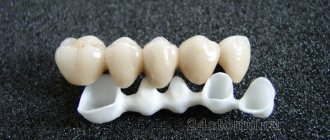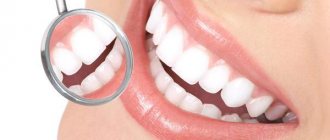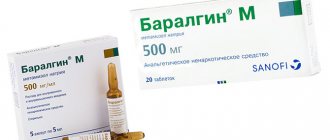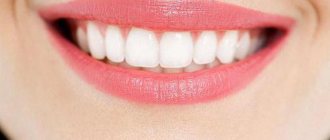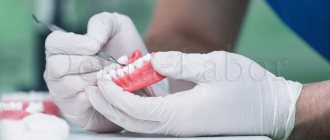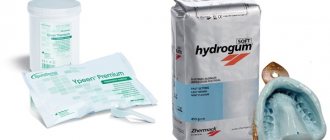Dear friends, hello!
Today, at your request, we will compare two antiseptics: Chlorhexidine and Miramistin.
We will read the instructions of both remedies and find out what their differences are, when it is better to offer Chlorhexidine, and when Miramistin.
I'll also jot down a list of customer requests for which you can offer them.
Go!
Active ingredients
Sometimes I hear that they are one and the same.
It’s not just pharmacy employees who visit the blog, so I tell everyone:
No, they have different active ingredients.
In Chlorhexidine, the active substance is called "chlorhexidine bigluconate".
Already from the name it is clear that the composition contains chlorine.
Let us remember bleach and chloramine, which have long been used for disinfection, since they mercilessly deal with microbial cells.
Chlorhexidine is from the same opera. I mean, it's just as strong an antiseptic.
It was synthesized in Great Britain in 1950, and then, having demonstrated its antimicrobial properties in clinical studies, it spread to different countries and continents.
Miramistin. The active ingredient sounds quite simple: benzyldimethyl (3-(myristoylamino) propyl) ammonium chloride monohydrate.
Its history dates back to the 70s of the last century in the USSR.
It was originally conceived for astronauts. Already during the first space flights, alarming news began to arrive from orbit: in the cabins of ships, it was not apple and pear trees that bloomed lushly, but colonies of bacteria and fungi.
This was predisposed to a confined space, a constant temperature of 22-23 degrees and microorganisms that normally live on the skin and hair of astronauts. And those antiseptics with which they were supplied on their journey turned out to be powerless.
Therefore, it was necessary to develop a drug that would act on bacteria, including antibiotic-resistant viruses, and fungi.
Preclinical trials took 10 long years.
And then hard times came for the country. Funding for many promising projects has ceased.
The new antiseptic might never have been published if it had not been for the Olympics in Moscow. It was expected that thousands of foreigners would come to the capital, and the USSR Ministry of Health was worried that there would be a surge in sexually transmitted diseases in a country where “there was no sex.”
Then the Minister of Health received information on Chlorhexidine and, just in case, on Miramistin (it was called differently in those years), which in studies showed itself to be unique in many respects.
The Minister of Health was impressed by the properties of the new antiseptic, and work on it continued.
In 1993, the first batch of the drug was released.
So if Chlorhexidine was originally a foreign creation, Miramistin is ours, ours.
How do Chlorhexidine and Miramistin work?
Chlorhexidine:
Damages the cell membrane of the microbial cell, increases its permeability. The substances necessary for its existence leak and it dies.
- At a concentration of less than 0.01% it has a bacteriostatic effect, i.e. suppresses the growth of bacteria.
- At a concentration of more than 0.01%, it destroys microbes and complex viruses (has a bactericidal and virucidal effect).
- At a concentration above 0.05% it destroys pathogenic fungi.
Conclusion: the 0.05 and 0.5% solutions of Chlorhexidine available in pharmacies are effective against various pathogens.
BUT: Chlorhexidine may cause irritation to the skin and mucous membranes. It sometimes causes chemical burns (mainly mucous membranes).
Miramistin:
- Has a bactericidal effect. The mechanism is similar to Chlorhexidine.
- Activates regeneration (healing) processes.
- Has hyperosmolar activity. This means that it attracts inflammatory exudate, which reduces inflammation in and around the wound.
- Sorbs (absorbs) purulent exudate. A dry crust forms faster. It protects the wound from germs and dirt.
Does not damage living skin cells. Does not cause chemical burns.
Conclusion: Miramistin has a milder effect than Chlorhexidine and is safer.
Which drug is better?
According to research data, Miramistin has a great effect against pathogenic microflora.
The drug covers a wider range of bacteria, which is why its use is preferable for various infections.
The action of Miramistin is mild without irritation or burns, so it is preferable for treating the laryngeal mucosa.
The peculiarity of the drug is its ability to destroy dangerous strains of bacteria, against which even antibiotics are powerless.
The hypoallergenic nature of the product expands the range of applications.
Both options are actively used in gynecology. They are used separately or in combination. It is impossible to say for sure which antiseptic is better, since the choice depends on the type of disease, characteristics of the body, the presence of allergies and other important factors.
Who do they act on?
Chlorhexidine
Targets for him:
- various microorganisms, including staphylococci, streptococci, chlamydia, ureaplasma, pathogens of syphilis, gonorrhea.
- mushrooms – the types are not specified in the instructions.
- viruses covered with an additional shell. They are also called “complex” or “complexly organized”.
Simple viruses consist of DNA or RNA (i.e., a molecule that stores genetic information) and a protective protein shell (capsid) surrounding it.
Complex viruses have an additional shell consisting of lipoproteins. This is what Chlorhexidine destroys, causing the death of the virus.
Examples of complex viruses: herpes simplex virus, human immunodeficiency virus (HIV).
Most of the viruses that cause ARVI are simple, so gargling with Chlorhexidine in the first days of ARVI does not make sense.
- Protozoa. For example, Trichomonas are the causative agents of trichomoniasis.
Miramistin
It acts on the same pathogens as Chlorhexidine.
In addition:
- active against hospital strains. These are types of microbes that have adapted to life in a hospital environment. They are not taken by standard antibiotics because they have mutated and acquired special properties. Most often these are Staphylococcus aureus, Streptococcus, Escherichia coli, Proteus, Klebsiella, Pseudomonas aeruginosa, etc. It is these microbes that are often responsible for the development of severe purulent processes in weakened patients who have been in the hospital for a long time.
- active against yeast fungi, dermatophytes (the main causative agents of mycosis of the feet), ascomycetes (a type of mold fungi). It even works on those mushrooms that have become resistant to antifungal agents.
On the Internet I came across Miramistin ointment, which is indicated, among other things, for the treatment of mycoses of the feet. But I didn’t find it in Russian pharmacies. Or is there?
Conclusion:
The spectrum of action of Miramistin is higher.
When are Chlorhexidine and Miramistin used?
Chlorhexidine:
- Prevention of sexually transmitted diseases: syphilis, gonorrhea, trichomoniasis, chlamydia, herpes, HIV, etc.
- Disinfection of hands, instruments, surgical field.
- Prevention of suppuration of abrasions and wounds.
- Festering wounds.
- Burns – to prevent infection.
- Oral diseases: gingivitis, stomatitis, periodontitis, etc.
- Prevention of infection after dental operations (for example, tooth extraction) and manipulations.
- In gynecology, Chlorhexidine irrigation is used to prevent postpartum infection.
- In urology - in the complex treatment of urethritis (inflammation of the urethra).
- Prevention of fungal infection after visiting baths, saunas, swimming pools.
- Treating shoes to prevent re-infection during the treatment of mycoses of the feet.
- Disinfection of the injection site in the absence of alcohol or alcohol wipes.
Miramistin:
The price of Miramistin is significantly higher, so, as a rule, it is NOT used to disinfect hands, instruments, shoes, or to prevent fungal infections after visiting public places where you can pick up a fungus.
The rest of the readings are the same.
Additionally:
- Complex treatment of otitis (drip into the ear, put turundas), sinusitis (during puncture, the maxillary sinuses are washed).
- If necessary, it can be dropped into the eyes: conjunctivitis, eye injury, burn. There are even eye drops containing Miramistin in the same concentration as the solution for external use. They are called Okomistin.
Conclusion:
Chlorhexidine in solution has a wider range of applications as a PREVENTIVE agent, and Miramistin - as a MEDICINE.
Clinical researches
According to the results of clinical trials of the ASEPTA® rinse After 3 weeks of using the ASEPTA® rinse, gum bleeding is reduced by 28.3%, inflammation is reduced by 32.3% and the hygienic condition of the oral cavity is improved by 33.5%.
The mouthwash is designed to protect gums from inflammation and improve oral hygiene and is recommended for use by patients suffering from:
- acute and chronic gingivitis;
- acute and chronic periodontitis;
- stomatitis;
- post-extraction alveolitis;
- toothache of infectious origin.
Sources:
- The role of anti-inflammatory rinse in the treatment of periodontal diseases (L.Yu. Orekhova, A.A. Leontyev, S.B. Ulitovsky) L.Yu. OREKHOVA, Doctor of Medical Sciences, Prof., Head of Department; A.A. LEONTIEV, dentist; S.B. ULITOVSKY, Doctor of Medical Sciences, Prof. Department of Therapeutic Dentistry of St. Petersburg State Medical University named after. acad. I. P. Pavlova
- Report on clinical trials to determine/confirm the preventive properties of commercially produced personal oral hygiene products: mouth rinse "ASEPTA PARODONTAL" - Solution for irrigator." Doctor of Medical Sciences Professor, Honored Doctor of the Russian Federation, Head. Department of Preventive Dentistry S.B. Ulitovsky, doctor-researcher A.A. Leontiev First St. Petersburg State Medical University named after academician I.P. Pavlova, Department of Preventive Dentistry.
- Report on determining/confirming the preventive properties of commercially produced personal oral hygiene products: Asepta toothpaste used in combination with Asepta mouthwash and Asepta gum balm Head. Department of PFS Doctor of Medical Sciences Professor S.B. Ulitovsky St. Petersburg State Medical University named after Academician I.P. Pavlova. Faculty of Dentistry. Department of Preventive Dentistry.
Systemic effects
Chlorhexidine
When applied topically the aqueous solution is not absorbed into the bloodstream and does not have a systemic effect. In case of accidental entry into the stomach, it is not absorbed.
BUT: nevertheless, the manufacturer warns:
In case of accidental ingestion of the solution, perform a gastric lavage and give a sorbent.
Apparently, this is why in the instructions for Chlorhexidine we do NOT see a clear recommendation to use it for sore throat and tonsillitis. Not everyone knows how to gargle correctly. This is especially true for children. They can easily swallow it.
The alcohol solution is partially absorbed through the skin and can cause depression of the central nervous system.
Special instructions:
If any Chlorhexidine solution accidentally gets into your eyes, rinse them quickly and thoroughly with water.
Avoid contact with the inner ear. This could be the case, for example, with perforated otitis media. Therefore, Chlorhexidine is not dripped into the ear.
Miramistin
When applied topically, it is not absorbed through the skin and mucous membranes.
Accidental ingestion does not pose a health hazard. The drug will come out naturally.
Conclusion:
Miramistin is safer.
Doctors' opinion
Anna Mikhailovna, otolaryngologist, St. Petersburg: “I often prescribe Miramistin to patients with sore throat, ear diseases, etc. The drug is effective against viruses and bacteria, and is safe. Its only drawback is its high cost.”
Igor Alekseevich, urologist, Makhachkala: “The drugs cope well with bacterial pathogens of urological diseases. I recommend my patients to use Miramistin, because it is better tolerated and does not cause a burning sensation when it comes into contact with the mucous membranes. If a person cannot afford to buy this drug, I authorize the use of Chlorhexidine.”
Inna Stepanovna, gynecologist, Kazan: “The drugs are effective. The list of indications for their use includes sexually transmitted infections, which makes it possible to prescribe them in gynecology. Women prefer Miramistin due to its high efficiency and lack of adverse reactions. Even pregnant women can use it.”
Side effects of Chlorhexidine and Miramistin
Chlorhexidine
- Allergic reaction.
- Dry skin.
- Skin itching.
- Dermatitis.
- Photosensitivity, i.e. the appearance of a rash on the skin after exposure to the sun.
- The appearance of brown spots on the teeth after frequent rinsing of the mouth.
- Tartar deposits.
- Taste disturbance.
Important: In February 2022, the FDA issued a notice warning that cases of anaphylactic shock have been reported with the use of Chlorhexidine-based products. Therefore, when selling Chlorhexidine, find out whether the buyer is prone to allergies.
Miramistin
- A slight burning sensation (passes in a few seconds).
- Allergic reaction.
Conclusion: Miramistin produces fewer adverse reactions and is better tolerated.
Contraindications
Chlorhexidine:
- Increased sensitivity.
- Dermatitis.
Carefully:
- Children.
- Pregnant women.
- Nursing.
Miramistin
- Individual intolerance.
As for children, the drug’s website contains recommendations for using Miramistin from birth for diaper rash, the appearance of pustules on the skin, as well as for the treatment of stomatitis, pharyngitis, tonsillitis, tonsillitis, for the treatment of wounds, abrasions, and insect bites.
Important: do not put it in the throat of children under 3 years old to avoid laryngospasm!
Nothing is said about pregnant and lactating women, but given that the drug is not absorbed through the skin and mucous membranes and does not have a systemic effect, it can be used during pregnancy and lactation.
Conclusion:
Miramistin has a wider target audience.
Analogs for children
Pediatricians recommend using Malavit to replace miramistin and chlorhexine.
This is a unique natural preparation that includes active bio-complexes of silver, copper, mumiyo and other natural substances. Malavit is prescribed in otolaryngology, gynecology, and dentistry. The product can also be used to treat affected areas of the skin (wounds, burns, bites, etc.).
Malavit has anti-inflammatory, antibacterial, decongestant, antipruritic and antifungal effects. The drug, according to official instructions, is used after the age of five. In practice, it is used earlier, after first reducing the concentration of the solution.
The drug “Dekasan” is also suitable as an analogue. It is capable of destroying bacterial and fungal microflora and preventing the proliferation of viral infections. The widest range of uses of dekasan is for diseases of the oral cavity.
They are often inhaled to treat infectious and inflammatory diseases of the throat (sore throat, tonsillitis, pharyngitis).
Also in children's practice, Lugol, chlorophyllipt (alcohol and oil solution), ingalipt, Gorlospas, faringosept and decatylene tablets, and other agents are often used.
Grand total
The main advantages of Chlorhexidine over Miramistin:
- Low price.
- The presence of solutions of different concentrations, which allows you to choose the optimal one for each specific situation.
- Wider range of application as a PREVENTIVE agent.
Minuses
- Lots of side effects.
- Children, pregnant women and nursing mothers - with caution.
- Bitter taste.
- Most release forms do not have a nozzle - it is inconvenient to use.
The main advantages of Miramistin over Chlorhexidine:
- Wider spectrum of action.
- More indications as a MEDICAL agent.
- Suitable for children from birth, pregnant women and nursing mothers.
- Neutral in taste.
- Few side effects.
- As a rule, a convenient nozzle is included.
Minuses:
- High price.
- Does not meet the requirements of evidence-based medicine.
Patient reviews
Ilona, 29 years old, Moscow
After surgery (removal of the gallbladder), I treated the sutures with Miramistin for a week. Nothing festered, everything healed quickly, there was not even redness or inflammation. Now I use this solution to treat the navel of my newborn daughter, it is a good remedy and protects against all types of bacteria.
There are many different disinfectants available in pharmacies, but many people do not know whether they can fully replace each other.
The article discusses the comparative characteristics of Miramistin and Chlorhexidine, which drug is better to choose in each specific situation.
Release forms. When that?
Chlorhexidine
A 0.5% aqueous solution is suitable for purulent wounds, bedsores, and trophic ulcers.
a 0.5% alcohol solution for disinfecting hands if people, for example, go on a trip, to disinfect instruments and injection sites.
In all other cases - 0.05% aqueous solution.
Miramistin
With a gynecological attachment - for the treatment and prevention of vulvitis, vulvovaginitis, when there is itching, discomfort in the vagina, discharge from the genital tract.
Miramistin with a urological applicator complete with a spray nozzle is especially suitable for a male traveler or who frequently goes on business trips.
Miramistin with a spray nozzle is convenient for irrigating the throat, nose, mouth, treating wounds, and skin.
Miramistin in a 500 ml package is the optimal form of release for treating wounds, burns, bedsores, and trophic ulcers that have a large area.
Customer requests when it is possible to offer an antiseptic solution
- I need some antiseptic for the road.
- Irritation after epilation.
- Skin irritation after shaving.
- Wet (water) callus. (Treat the needle and skin with an antiseptic, carefully pierce the callus, treat the skin again with an antiseptic).
- How to disinfect the ear after a piercing?
- How to disinfect the skin after piercing/tattoo?
- How can you treat a trophic ulcer? (Offer an antiseptic in combination with other products).
- How to treat bedsores? (Offer an antiseptic in combination with other products).
- How to treat shoes with fungus so as not to become infected again?
- I need something for foot fungus. (Suggest antifungal plus Chlorhexidine for shoe treatment and healthy foot skin).
- I go to the pool/sauna. Is there anything to protect yourself from fungus?
- Mouth ulcers. (Offer an antiseptic in combination with other agents. If a child has , Miramistin is preferred).
- The gums are inflamed. (Offer an antiseptic in combination with other products).
- White plaque in my mouth, I took an antibiotic. a child has oral candidiasis, use Miramistin. Do not spray small children in the mouth! Wrap a bandage around your finger, wet it with Miramistin and treat the mouth).
- The tooth was removed. How can you rinse your mouth? The doctor didn't prescribe anything.
- I need alcohol for injections. – (Suggest 0.5% alcohol solution of Chlorhexidine).
- I have a sore throat. I need something to gargle. Only cheaper. (Chlorhexidine).
What else? Add!
Effective in protecting against viruses
Viruses cannot penetrate the dense cell membrane of our body. Infection occurs only if microtraumas are present, which serve as some open gates for viral infection. Miramistin as a medicine can not only fight it, but acts as an auxiliary substance, supporting local immunity. The same applies to coronavirus in particular. When combined with antiviral drugs, Miramistin has a positive effect on the body.
Chlorhexidine can be used as a disinfectant: wash your hands, rinse your nose and throat after visiting the street or contacting sick people.
In the context of the spread of coronavirus infection, try to monitor your personal hygiene more often, wash your hands with antibacterial soap, and if this is not possible, use hand and skin antiseptics.

